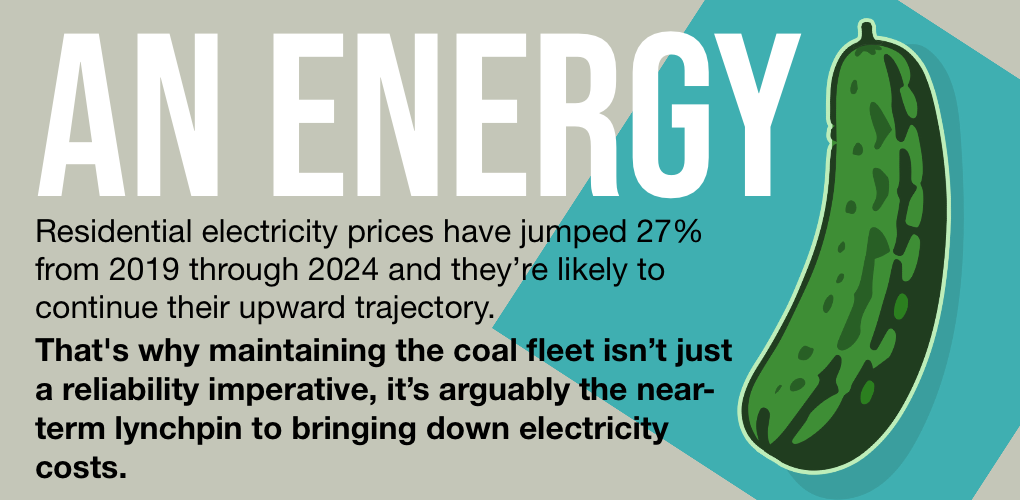
As Electricity Prices Rise, Coal Provides Answers
Concern over rising electricity prices is everywhere. The pickle Americans now face has been a longtime coming. Residential electricity prices have jumped 27% from 2019 through 2024 and they’re likely to continue their upward trajectory before policy can begin to soften the blow.
As policymakers grapple for answers, new studies are providing important evidence about why prices have risen so quickly, outpacing inflation.
A recent study by the Lawrence Berkeley National Laboratory shows state energy policy, namely state renewable mandates, are having an impact.
“States with the largest price increases in recent years typically featured shrinking customer loads — partially linked to growth in net metered behind-the-meter solar — and had [renewable portfolio standard] programs in concert with relatively costly incremental renewable energy supplies,” the researchers said.
In addition, spending on grid infrastructure to reshape and upgrade the grid is also driving costs. Utility spending on distribution — largely the poles and wires that deliver electricity to homes and business – accounted for 44% of utilities’ capital expenditures in 2023, marking a significant rise since 2019.
With infrastructure spending still rising and inflationary pressure affecting supply chains, further price increases appear already baked in. According to the study, pending rate hike requests from utilities are at their highest level since the 1980s.
Surging Demand and Shrinking Capacity Margins
Of course, rising power demand – notably from reindustrialization and the data center boom – is also having an impact. In the past, prices have typically fallen in states with higher electricity demand growth as the customer base expands providing more ratepayers to cover system costs. But when demand grows extraordinarily quickly – as it is in the PJM market, home to the world’s data center capital – it can send bills soaring.
Demand is surging and it’s colliding with Obama and Biden-era regulatory assaults on the coal fleet. Exploding capacity prices – a key driver of rising costs for consumers – are a direct reflection of the loss of essential coal capacity. Further coal plant losses – which was the alarming trajectory under the last administration – would have made today’s affordability and reliability crisis all but untenable.
The nation’s remaining coal fleet is proving its importance this year. Coal plants remain a reliability bulwark but are also acting as a price shock absorber for consumers.
Dispatchable Fuel Diversity
Rising natural gas prices, driven by surging liquified natural gas (LNG) exports, have utilities turning to lower priced coal to reduce costs. Coal generation is up 11% across the U.S. through the first three quarters of the year while gas generation is down 3%.
With U.S. LNG export capacity set to nearly double in five years, further attaching the U.S. gas market to European and Asian buyers willing to pay far more, the pressure on U.S. natural gas prices is only growing.
Keeping the U.S. coal fleet as a foundation to build upon is an answer to every single driver of rising electricity prices.
The coal fleet provides critically important dispatchable fuel diversity to reduce gas demand as prices rise, it helps reduce the need for even more capital spending on new infrastructure (where costs have ballooned most) and it’s all but irreplaceable to meeting surging demand.
Maintaining the coal fleet isn’t just a reliability imperative, it’s arguably the near-term lynchpin to bringing down electricity costs.
- On October 22, 2025
